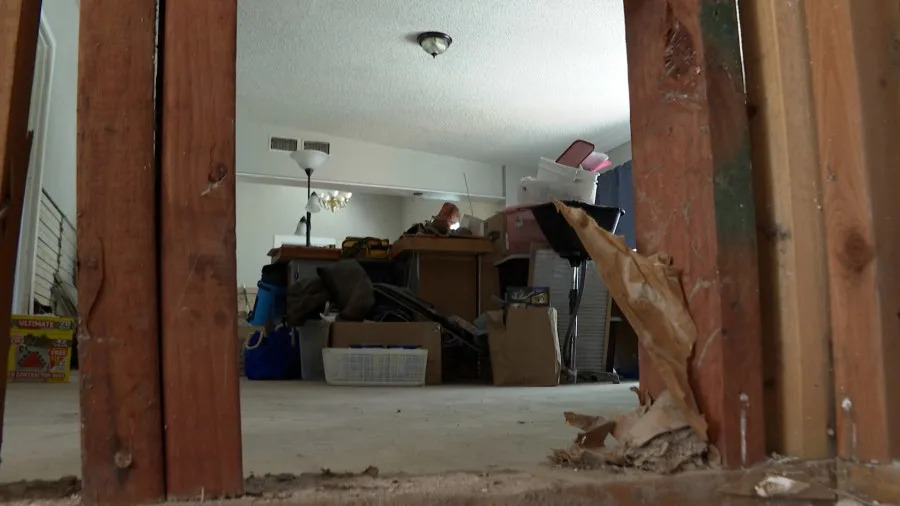
(Getty Images)
A new survey sheds some light on the people behind Nevada’s elevated unemployment rate, which has consistently remained higher than all other states and higher than prepandemic levels.
The Center for Business and Economic Research at UNLV surveyed more than 300 Nevadans who self-identified as unemployed and seeking a job. The results, released this week, suggest there are disconnects between the jobs people desire, the ones they are qualified for, and what’s actually available.
The center, which worked on the Nevada Job Seeker Survey with the Nevada Department of Employment, Training, and Rehabilitation, believes the insights could be useful as the state “continues to navigate post-pandemic economy recovery and braces for more economic uncertainty ahead.”
The survey indicated that over half of job seekers want to work in a different industry than the last job they held, but that they aren’t eyeing the most rapidly growing fields. Transportation, hospitality, and administration were the desired industries. The survey did not document what industries workers had left.
Researchers wrote job seekers’ desires is something the state should consider, because, while those industries are currently dominant, they aren’t growing as fast as other areas.
The state’s fastest-growing sector, health care, was desired by only 15.5% of survey respondents, ranking 7th among the options available. The top three desired industries are expected to grow at roughly half the rate of health care over the next decade.
The CBER survey didn’t break out occupations by subsectors, but the health care sector includes home health and personal care aides, the occupation that has grown the most nationally for at least a decade, is projected to grow more than any other occupation through 2033, and paid a median annual wage of less than $35,000 in 2024.
‘Structural unemployemnt problem’
When asked in the survey what the biggest challenge to transitioning to a new job would be, the “lack of available job opportunities” was the most selected response statewide. Regionally, job availability as a perceived barrier was most pronounced among unemployed people in Clark County
Educationally, lack of job opportunities was cited by nearly 40% of those surveyed who have bachelor’s degrees, compared to roughly 27% of respondents with either associate’s or high school degrees.
Citing research indicating just over half of Nevada jobs require skills beyond high school but short of a bachelor’s degree, the state has “an oversupply of workers with high school diplomas and bachelor’s degrees relative to demand.”
Southern Nevada has seen strong regional employment growth, the report notes, “suggesting a mismatch between available jobs and job seekers’ skills or interests.”
Transportation was the second most selected answer statewide, but the topmost answer selected by rural Nevadans. It was also the biggest perceived barrier for respondents aged 24 and younger.
Inadequate skills training and certifications was the third most selected response statewide, but the top answer in Washoe County. (For comparison, Clark County respondents listed inadequate skills as the fourth biggest obstacle.)
Forbes last year ranked Reno as having one of the highest percentages of residents aged 25 and up with a bachelor’s degree. Referencing that ranking, the CBER report concluded “the current labor market may not align with the qualifications of job seekers. That is, a structural unemployment problem exists.”
“The influx of tech and manufacturing companies in Reno has created more higher skills job opportunities, but might be limiting opportunities for individuals without advanced credentials or specialized training in the tech industry,” the report said.
Reasons for unemployment
The survey found the top reasons for job separation included involuntary layoffs, family obligations, and health issues.
Being laid off was the most-cited reason for all respondents, but were more commonly cited by those with lower levels of education and Hispanic Nevadans.
Among the short-term unemployed — that is, people who’ve been unemployed for fewer than six months — family obligations were the leading reason cited for leaving their last job: 23.8%.
CBER noted that, while family obligations can include elder care or other types of care, its prevalence as a reason cited for unemployment was most pronounced for people with children. It was the top reason cited by parents with one child, and a close second (behind involuntary layoff) for those with two to four children. Those findings align with similar surveys conducted nationally, according to researchers.
Previous surveys have found that employers are aware that childcare issues are a barrier to employer retention and recruitment.
CBER found that women’s employment is disproportionately impacted by family obligations: 22.5% of women cited them as the reason for leaving their last job, compared to 14.8% of men.
Behind layoffs and family obligations were health-related factors: 16.7% of respondents cited it as the leading cause. CBER noted that no demographics stood out as being more impacted, “indicating that personal health concerns can affect individuals broadly.”
The results on separations differed from the year prior. In 2023, involuntary layoff was also ranked first, but made up a smaller share — 21.4% in 2024 compared to 15% in 2023. Family obligations was the third most common reason cited in 2023, behind “work environment,” which dropped to the fifth most common reason.
For the full report, visit CBER’s website.






Comments